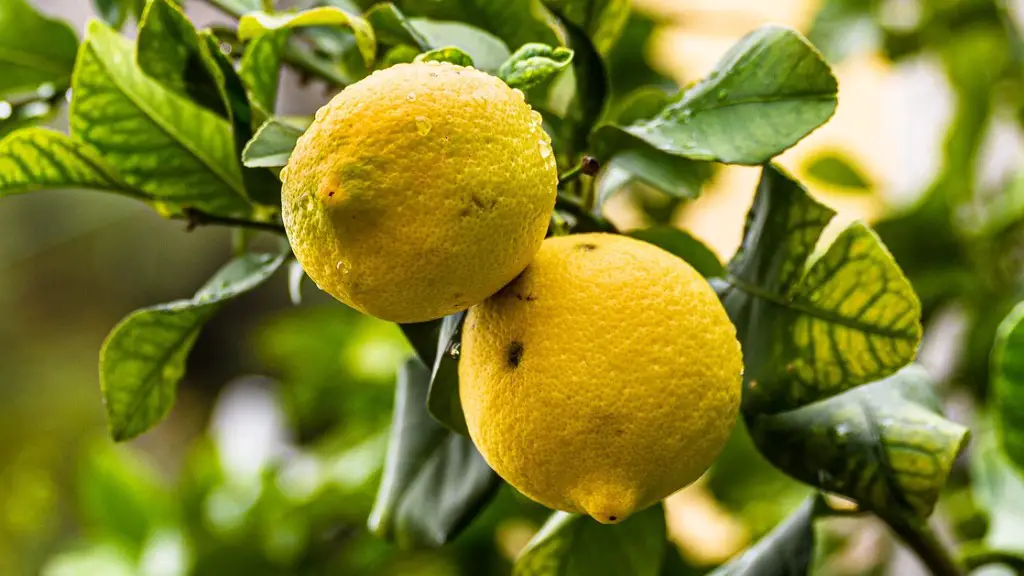Overview of Date Palm Tree
A date palm tree is an iconic symbol of the Middle East and many other countries. It is an easily recognisable palm, with the characteristic fan leaves and sweet fruits. It is also one of the few true source of sugar in the region and is used to sweeten local dishes and drinks. Its oil is also used in cooking, body care products and other industrial products. The date palm is a very long lasting plant and can easily live up to hundreds of years with proper care.
How to Plant a Date Palm Tree
When planting a date palm tree, it is important to think about two main things- choosing the right variety and location. There are many varieties of date palm trees, and each of them has specific needs in terms of climatic conditions, soil composition, watering needs, and other specifics.
When selecting the perfect spot to grow a date palm, on should first make sure there is enough space for the tree to grow and spread comfortably; around 6-7m of distance is advised for future development of the plant. It is important to have enough sunlight and to choose a location that is well ventilated.
When it comes to soil, the ideal mix for your date palm tree should have good drainage and a suitable pH balance. It is also important to have organic material such as organic compost to provide essential nutrients for the tree.
Now for the actual planting: a hole twice the size of the pot should be dug and filled with the ideal soil mix. The date palm tree is then inserted into the hole and the rest is filled with soil. If a stake needs to be added to ensure stability, make sure to place it before filling the hole with soil to avoid damaging the roots. Water is then added around the newly planted date palm tree, making sure not to drown the root system. Fertiliser can also be added.
Regular watering and fertilisation are necessary to ensure the health and longevity of the date palm tree. Experts advise watering two to three times a week and fertilising every two weeks during the early months of growth. During the summer months, more water is needed and the frequency of fertilisation should increase.
Common Problems when Planting a Date Palm Tree
The main problems faced when planting a date palm tree are accidental damage, soil related problems and pests. Accidental damage can occur during the planting and afterwards if the tree isn’t properly secured and propped up with stakes. This can delay growth and cause the tree to fail.
Soil related problems usually center around the composition of the soil and how this affects the growth of the tree. Poor drainage and unsuitable pH balance can inhibit growth and oxygenation of the roots, leading to nutrient deficiency and poor overall health. The addition of fertiliser, organic compost and regular waterings can help counteract this.
Finally, pests can also affect the growth of a date palm tree. If a tree is not properly watered and fertile, they may be more susceptible to pests and diseases. Regular monitoring and good maintenance practices can help minimize these risks.
Other Important Considerations when Growing a Date Palm Tree
When growing a date palm tree, it is important to consider the environment and any additional factors that can affect the health of the tree. Firstly, it is important to have a good understanding of the climate in the area, as certain varieties of date palm tree may adapt better to the environment. It is also important to think about temperature and rainfall, and any additional ways of protecting the tree from adverse weather conditions.
It is also important to plan for pruning and shaping of the tree. Over time, the date palm tree may need to be manipulated by cutting off dead or unwanted branches, or even the entire trunk. This is a delicate process that needs to be done well in order to keep the shape of the tree and ensure its health.
Property owners should also be aware of building a protective wall around the date palm tree. This is especially important as the tree can be vulnerable to wind and pests if not properly protected. The wall should also be large enough to allow easy access for pruning and other maintenance.
Additional Care Requirements for Date Palm Trees
Once a date palm tree is planted, there are a few additional care requirements that help ensure its health. Firstly, it is important to apply a layer of mulch around the tree’s base, as this provides insulation against weather effects. It also helps retain moisture and keep unwanted weeds out.
Secondly, it is important to regularly check the tree for any signs of disease. If a suspect any issues, it is best to seek advice from an expert to address the problem quickly and effectively. It is also important to regularly check the soil, as a dry or waterlogged soil can significantly affect the health of the tree.
Finally, it is important to make sure the tree is regularly pruned and shaped, as this helps to manage the size and shape of the tree. A skilled arborist should be consulted for this, as they will be able to identify which branches need to be removed and which ones can be saved for future growth.
Harvest and Yield of Date Palm Trees
Once a date palm tree is correctly planted and maintained, it can start producing fruits within a couple of years. The yield of a single tree can vary greatly depending on the variety, but it can produce between 6 and 10kg of dates per year, with the best varieties producing up to 18kg of dates per year. Different date varieties also ripen at different times, and the harvest can take place over several months.
Harvesting dates can be a labour intensive process, and it is important to do it carefully. Harvesting too early or too late can affect the quality of the fruits, so it is important to wait until they are ripe before picking them. It is also important to look out for any potential pests or diseases while harvesting, and to act quickly if any signs are identified.
Economic and Social Benefits of Date Palm Trees
There are many economic and social benefits of growing date palm trees. As mentioned earlier, dates are an important source of natural sugar in many countries, and growing them can help supplement income for local farmers. Dates are also used for many industrial purposes such as being turned into syrup, jam or butter, and the oil from the tree can also be used for many purposes such as cooking.
The livelihoods of many small farmers also depend on growing dates, as it can be an important source of income in remote and marginal areas. Growing date palms can also help create employment and bring people together to work in rural areas or in date processing businesses, helping to strengthen and diversify local economies.
Moreover, the date palm trees are a symbol of peace and hospitality in many societies, and they can be a symbol of hope and optimism for future generations. Growing date palm trees can also help to conserve water, as they are especially resilient in dry climates and can help to preserve scarce resources while providing food, fuel and other products.
Environmental Benefits of Date Palm Trees
Date palm trees are also important for their environmental benefits. They can help to reduce carbon dioxide emissions, as they require less energy for growing, harvesting and processing than many other crops. Additionally, the shaded areas underneath the palms provide shelter from the sun and from dust, which helps to reduce evaporation and water loss. The residual dates themselves are also rich in many important vitamins and minerals, which help to maintain proper nutrition.
In addition, date palm trees also help to preserve biodiversity by providing a habitat for many birds and other wildlife. As they require little pesticide or fertilizer, they can also help protect the surrounding environment. Finally, date palm trees are also important for erosion control; their large root systems help to protect the land from wind and water damage.
Conclusion
Date palm trees are iconic symbols of the Middle East and many other countries around the world. They provide important economic, social and environmental benefits both in terms of food production, employment and conservation. When growing date palm trees, it is important to choose the right variety and location, use the right soil mix and take regular care of the tree to ensure its health. Regular monitoring for pests and diseases, and additional care such as pruning and mulching should also be done to ensure the longevity and success of the tree.




